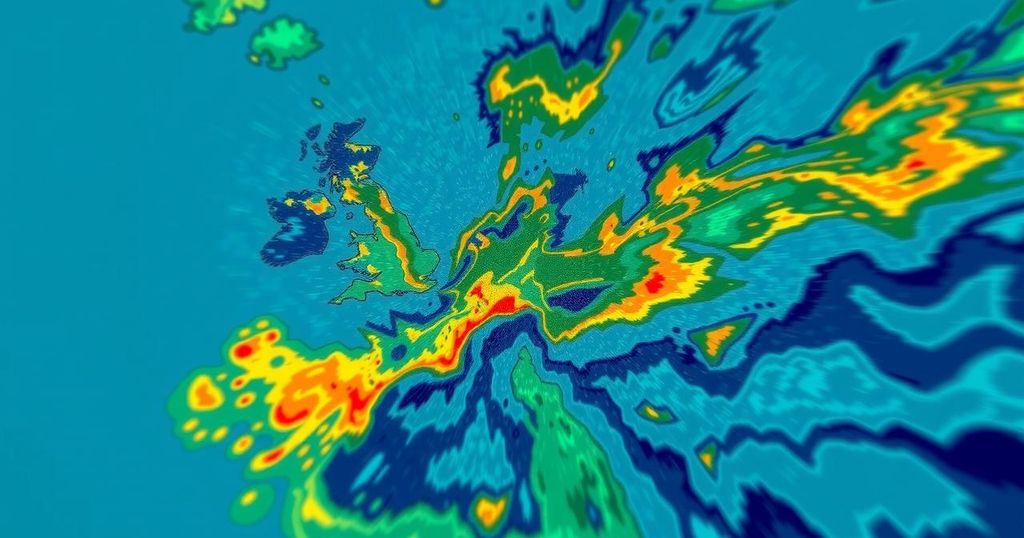Hurricane Oscar: An Unexpected October Surprise in the Caribbean

Hurricane Oscar formed unexpectedly near the Turks and Caicos, rapidly intensifying from a monitored disturbance into a Category 1 hurricane. It is recorded as one of the smallest hurricanes ever at just 5-6 miles wide. Despite limited wind damage, significant rainfall caused flash flooding in eastern Cuba and the southeastern Bahamas. Oscar is expected to weaken in the coming days, posing no threat to the U.S., while future Caribbean developments will warrant monitoring as November approaches.
In an unexpected turn of events, Hurricane Oscar formed rapidly over the weekend near the Turks and Caicos, catching hurricane forecasters off guard. The disturbance, initially labeled as Invest 94L, had been monitored since its emergence off the coast of Africa but was not anticipated to develop into a significant storm. By Friday, forecasts suggested that while the system could bring heavy rain to parts of the Caribbean, any potential for hurricane formation had been ruled out. Unexpectedly, within a mere 12-hour period on Saturday, 94L transformed from a non-threatening system to a Category 1 hurricane that made landfall in the Bahamas and Cuba. Oscar represented one of the smallest hurricanes on record, with a wind field measuring just 5-6 miles across. This size contributed to the failure of computer models, which are typically unable to detect weather phenomena of such limited dimensions. Despite these challenges, hurricane hunters were able to gather important data once they penetrated Oscar’s core, confirming and relaying critical information to the National Hurricane Center, thus enhancing forecasting models. Although the wind damage from Oscar was minimal due to its small size, the storm did bring substantial rainfall, leading to significant flash flooding in affected regions. As of the latest updates, Oscar is expected to weaken as it encounters increased wind shear. It is not anticipated to pose a threat to the U.S., and the foreseeable future in the tropics appears relatively calm. However, subsequent weather patterns may signal a return to activity in the Caribbean as November approaches, warranting ongoing vigilance from meteorological agencies.
Hurricane Oscar’s unexpected formation serves as a poignant reminder of the limitations inherent in hurricane forecasting, particularly with small storms. The disturbance that became Oscar was tracked for over a week but failed to show potential for tropical development prior to its rapid intensification. The phenomenon underscores the challenges faced by meteorologists who must often predict the unpredictable nature of tropical systems, especially those that can quickly escalate and impact land areas. The event also highlights the importance of real-time data collection from hurricane hunters, which can significantly enhance forecasting accuracy, particularly for storms that defy standard predictive models due to their size.
In summary, Hurricane Oscar emerged as a surprising development in the Caribbean, demonstrating the limitations of existing forecasting models when it comes to small-scale hurricanes. While it did bring significant rainfall and localized flooding, Oscar’s overall impact was lessened by its size. The event serves as a crucial case study for meteorologists as they seek to refine predictive methodologies. As the hurricane season progresses, monitoring for potential new systems in the Caribbean will be essential, though current atmospheric conditions suggest limited threats to the U.S. coastline.
Original Source: www.local10.com






